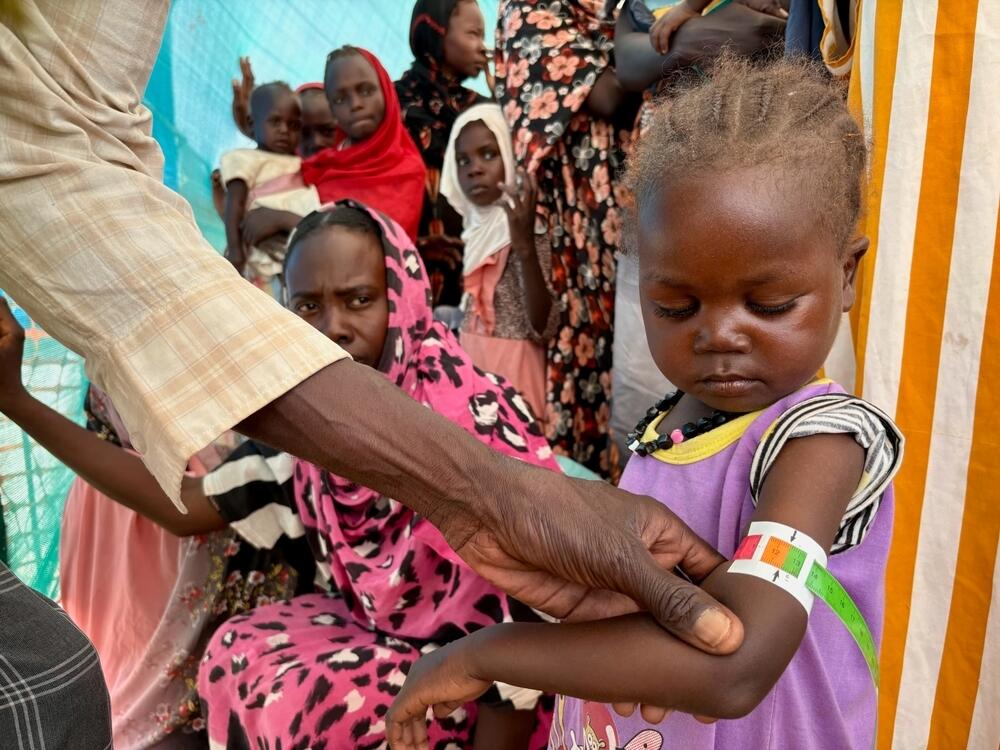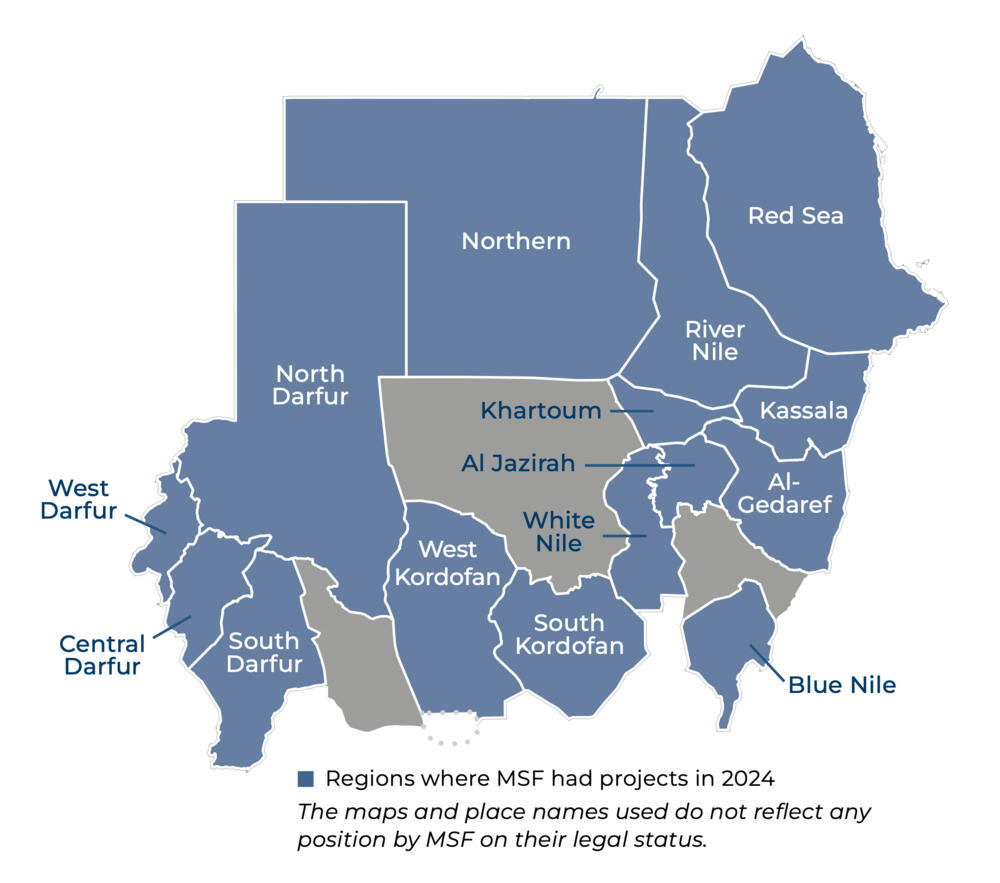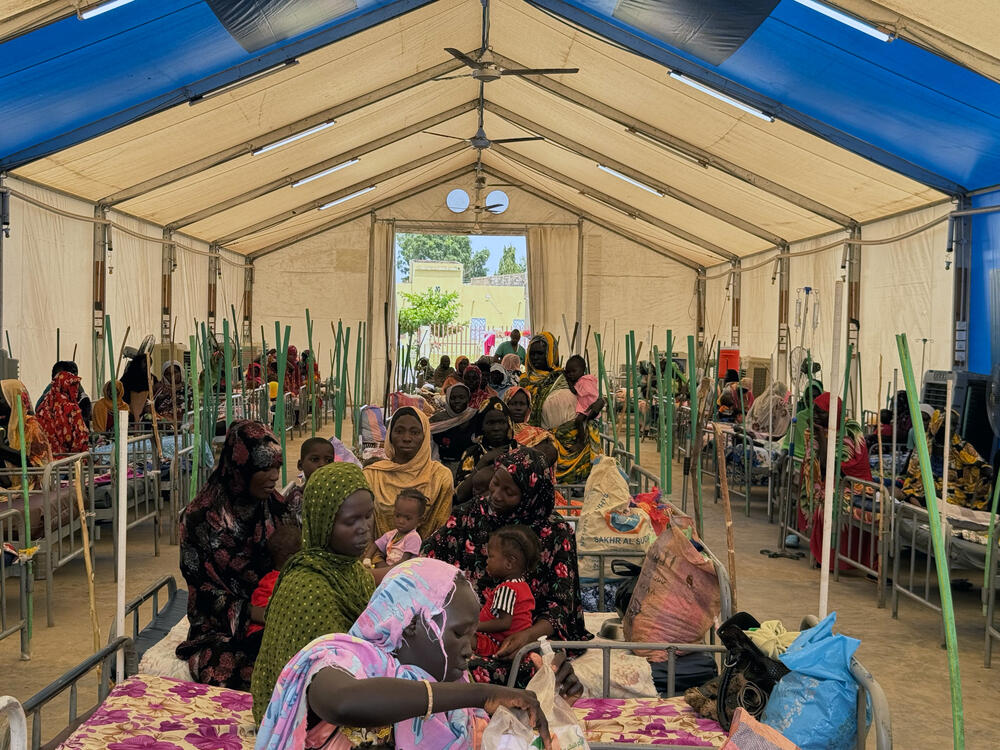In depth: Sudan’s extreme malnutrition crisis
As starved people continue trying to flee atrocities committed by the Rapid Support Forces (RSF) in El Fasher, Médecins Sans Frontières / Doctors Without Borders (MSF) teams are providing urgent care to those who have reached the town of Tawila.
Here, MSF teams are witnessing extreme levels of acute malnutrition, in what is now the most severe example of a malnutrition crisis that has gripped Sudan since the start of the war.
For months, MSF teams in Tawila have been treating malnutrition among patients who fled El Fasher, but rates are now staggering.
Among children under the age of five who reached Tawila between 27 October (when the RSF seized control of El Fasher) and 3 November, over 70 percent were acutely malnourished, with 35 percent suffering from severe acute malnutrition.
At the same time, 60 percent of the 1,130 adults MSF screened were acutely malnourished, 37 percent of whom were severely acutely malnourished. Malnutrition rates are even higher among pregnant and breastfeeding women.
MSF’s findings confirm fears that famine devastated people in El Fasher, which was besieged for more than 500 days. They also correspond with the recently released IPC report (the globally recognised hunger monitor) that found famine in El Fasher and Kadugli.
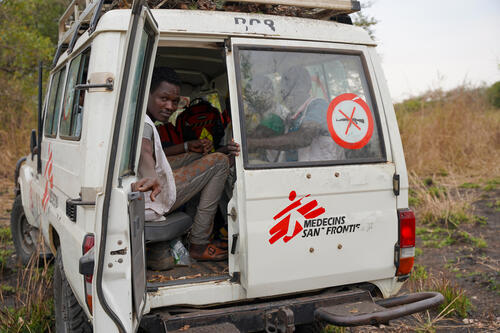
70%
percentage of children under five years old with acute malnutrition screened in Tawila
60%
percentage of adults with acute malnutrition screened in Tawila
What’s happening in El Fasher?
Survivors arriving in Tawila have described to MSF teams how life had become unbearable in El Fasher. People report having had no access to food, as community kitchens shut down, humanitarian aid was blocked, and markets were shelled and depleted. The price of food skyrocketed and in desperation, people were left with no choice but to turn animal feed into human food.
“We were so hungry we began eating ambaz (animal feed). At first it was free, then we had to buy it for SDG 20,000 per 1.5 kg (GBP 6), rising to SDG 50,000 (GBP 15) in June,” a displaced woman told MSF staff in North Darfur.
People trying to bring food to their communities in El Fasher were shot by the RSF. Dozens of people who survived managed to make it to Tawila, where they were treated by MSF.
“My cousin disappeared in June while trying for the first time to bring food, and since then we have had no news. At the exit of El Fasher, they faced RSF fighters on motorcycles who shot at them,” says a woman who fled the city in October.
MSF fears many people in and around El Fasher remain stranded, held for ransom, and unable to escape. The RSF and its allies must halt mass atrocities and provide safe passage for the survivors to flee.
People’s struggles are far from over once they reach Tawila. MSF teams have been treating high rates of malnutrition in pregnant women, whose children are at serious risk of being born underweight or malnourished.
The crisis in numbers
- In September 2025, in El Fasher 7 kg of millet cost SDG 500,000 (GBP 158) and 1 kg of sugar cost SDG 130,000 (GBP 41)
- Since the start of the year, half of the 6,500 pregnant women MSF has seen for prenatal care in Tawila were acutely malnourished: 15 percent with severe malnutrition and 35 percent with moderate malnutrition
- Between July and September, MSF treated 1,950 severely malnourished children at Damazin teaching hospital; 100 children died, many from combined cholera and acute malnutrition
A country in crisis
Beyond El Fasher, MSF teams across Sudan have seen a widespread increase in malnutrition among children in recent months. The crisis is being fuelled by overlapping factors, including inadequate food, disease, insecurity, lack of livelihoods and unsafe living conditions.
Displacement also plays a significant role in driving malnutrition. In Blue Nile State, eastern Sudan, the arrival of Sudanese returnees from South Sudan since June has pushed fragile resources to their limits.
Thousands of families live in makeshift camps with little access to clean water, food or hygiene services, leading to an ongoing outbreak of cholera and a surge of preventable deaths among children.
"There is no food or water in El Fasher. We had to eat fodder, and even that was expensive"
Eman, displaced person in Tawila
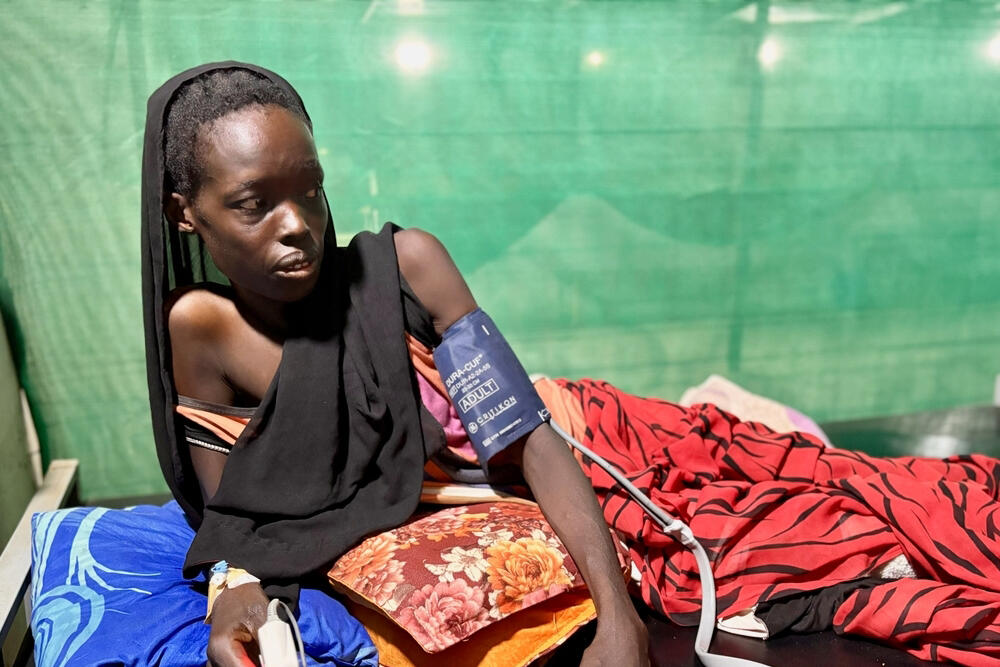
Even when people can return home after being displaced, they often face significant challenges in finding or affording food or accessing services such as medical care. In Khartoum State, malnutrition has worsened since June, as more than 700,000 returnees have moved back into war-torn neighbourhoods with limited access to water and healthcare.
Al Buluk Hospital in Omdurman in Khartoum state admitted 351 malnourished patients in September, while Al Banjadeed hospital in Khartoum city found 46 percent of children screened during consultations to be malnourished. The humanitarian response in Khartoum is still far below needs, with few organisations present and major gaps in both emergency aid and longer-term recovery efforts.
What’s more, the true scale of the crisis is likely far worse than reported. Without warring parties granting safe and unimpeded access to people at risk, combined with increased funding and humanitarian support from international organisations, more children will be vulnerable to Sudan’s protracted malnutrition crisis.
MSF and the crisis in Sudan
The violence between the Sudanese Armed Forces (SAF) and the Rapid Support Forces (RSF) has trapped millions of people in the middle of an unexpected conflict. Sudan now has the world's largest displacement crisis, with millions forced to flee their homes, while access to essential services such as healthcare has become increasingly difficult.
MSF teams already working in Sudan have been responding to the crisis since its first moments.
